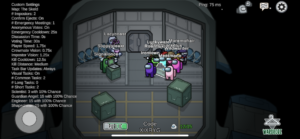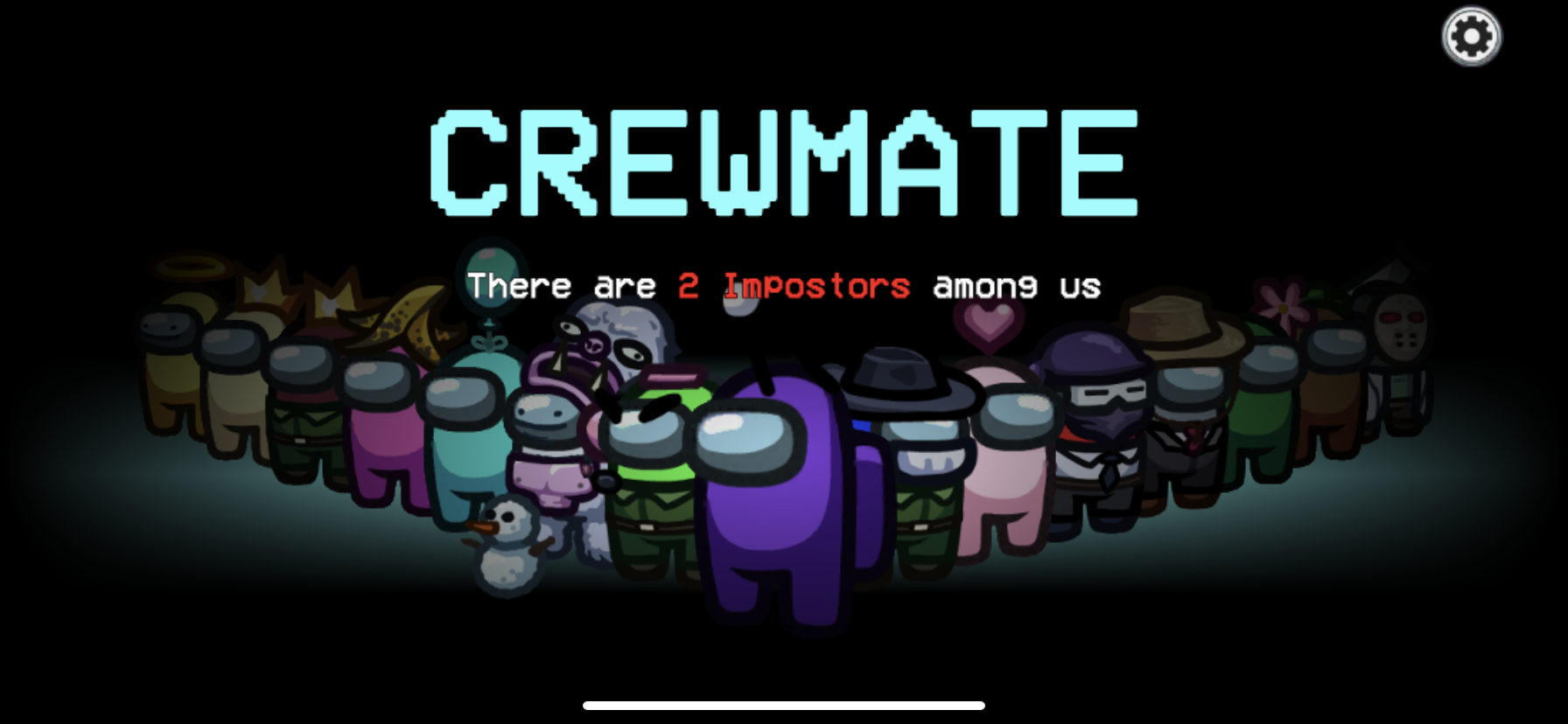Among Us Gameplay
Name of Creator, Game, Platform
I played the game ‘Among Us‘ with group of friends in person. ‘Among Us’ is a multiplayer game of teamwork and betrayal. There is some number of imposters and the remaining players are crewmates who want to fill the team’s taskbar before the imposters kill them off. There are team discussions to debate who killed off a player or to accuse another player of being the imposter. A voting system is intact where players reconvene and vote on who they think is the imposter. The game continues until either the imposter(s) or the crewmates win.

The original author and creator of this game is InnerSloth LLC. ‘Among Us’ was originally released on Android and iOS devices in June 2018 and later available on Windows in November. Since then, this game has been released on the Nintendo Switch, PS4, PS5, Xbox One, and Xbox Series X/S.
Target Audience
My initial guess was ages 14+ due to violence. Apple Store says the target audience of the game is ages 9+ due to ‘infrequent/mild cartoon or fantasy violence’ and ‘infrequent/mild horror/fear themes’ [1]. Common Sense Media rates the game ages 10+. The typical players of this game is between the age of 14-30.
Notable Elements of The Game/Successes & Failures
I ventured into the unknown with a small group of four friends and we played in person on mobile devices. Key actions in the game included calling an emergency meeting, reporting a dead body, voting, and completing tasks by navigating through the map. Some notable elements of the game were the chat, the map, the task bar, the voting schema. We initially played amongst ourselves and quickly noticed that we did not have access to the chat (since none of us had accounts and played as guests), so we resorted to live communication. We were all new to the game and were quite confused about how to complete tasks and how to navigate to a certain part of the map. The task bar is to indicate how many tasks are left before we successfully survive without getting killed off by the imposter(s). There was a voting schema after every round (dead body discovered or emergency meeting called) where players discuss with one another about who the imposter(s) can be and ultimately decide whether to skip a vote or vote against a player (think they are the imposter).
In our group, there was one imposter, Featherdun, who hide their identity very well. There was a lot of instigation and lack of trust due to the nature of being in a small group. Under this veil of confusion, it was extremely easy for the imposter to pretend like they were completing tasks. I personally had the map open 24/7 and barely had the capacity to click outside of the map to look for suspicious crewmates without looking suspicious myself. The nature of keenly knowing that someone next to you was out to get you (or that someone will find out you are the imposter) was very nerve-racking yet thrilling.
We then branched out into larger, public games with strangers (groups of 15) and it took a huge turn very quickly. I noticed different patterns in methods of play. In a smaller group such as our initial play, players could not trust each other. In a bigger group of players however, players tend to implicitly stick in groups or pairs to complete tasks to reduce the risk of getting killed alone. Player to player relationships change depending on the group and as more and more people get killed off. It was a huge success seeing people collaborate with one another and it was quite rewarding when we were able to work as a team to eliminate someone who was suspected as an imposter and turned out to be one. I believed the epic fail was not allowing everyone to comment in chat, regardless of guest or user status.


Comparison
This game dynamic is very interesting because it appears to be a team vs. team game but team members do not know who is good or bad, and may accidentally kill off the good person, similar to their inspiration game, Mafia. The lack of typical face-to-face interaction (when playing with strangers or not in-person) makes it easier to hide your emotions if you are the imposter, making it easier to trick other people. This aspect makes it different from other task-based games as well. I believe these are for the better because in person, it is much more difficult to fake a reaction, as not everyone has a poker face or talks as much, regardless of what player they are in the game.
Fun/Changes
The game was fun! I would give it a 8/10 because it was slightly confusing and I would have appreciated if the voting was more accessible to everyone. Since I was a guest user, I could not comment in the chats. Thus, I was unable to contribute who I thought was the imposter (if I saw someone kill another player) or defend myself. Oftentimes, the lack of chat engagement may make you look suspicious as well.
If I were to improve this game, I would love to see more roles assigned in the game, beyond just crewmate and imposter. If there was a character that could revive another (with constrained time limits) that would be super interesting to see. It would be a competition between how many lives could be saved quickly enough vs. how many players can be eliminated quickly, without either parties looking suspicious.
Sources
[1] https://apps.apple.com/us/story/id1440847896



